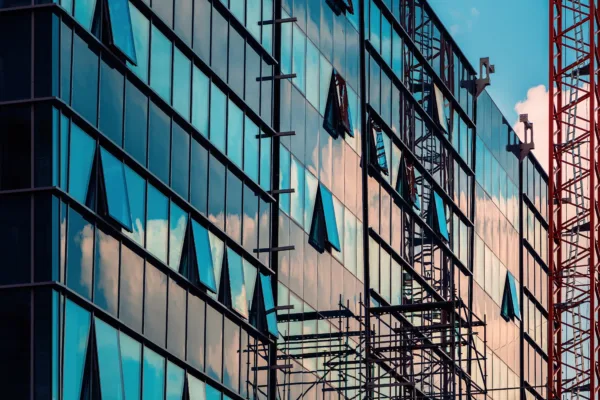Few surprises but welcome finality from the Supreme Court in URS v BDW – subject to some limited exceptions

The Supreme Court handed down the eagerly anticipated judgment in URS v BDW yesterday. In summary, not much has changed from the Court of Appeal’s decision, though there are some clarifications on “voluntariness” and contribution claims. Those hoping for a definitive reconsideration of Pirelli, however, will be left disappointed.
The case concerns serious structural engineering defects at two sets of multiple high-rise apartment blocks, known as ‘Capital East’ and ‘Freemens Meadows’. BDW was the developer. URS was appointed by BDW to provide structural design services. BDW had a proprietary interest in both developments at the time they were constructed, which was subsequently sold to third parties. Although no claim was intimated against BDW by any leaseholders, in 2020-1 BDW carried out remedial works to the developments, and sought to recover those costs from URS. The claim was advanced in negligence alone, as all other claims were, at the time of issue, time barred.
A preliminary issues trial proceeded on the assumption that URS had failed to exercise reasonable skill and care, resulting in defects presenting a health and safety risk. The issues were the scope of URS’ duties, and the recoverability of losses in tort. It was decided ([2021] EWHC 2796 (TCC)) that URS’ duty extended to the main losses claimed, which were in principle recoverable. Causation and mitigation were ordered to be determined at trial.
In June 2022 s.135 of the Building Safet Act 2022 (“BSA”) retrospectively extended limitation for accrued claims under s.1 of the Defective Premises Act 1972 (“DPA”) to 30 years. BDW immediately applied to amend its case to include a DPA claim and also a Civil Liability (Contribution) Act 1978 (“the Contribution Act”) claim, on the basis that both URS and BDW were liable under the DPA in respect of the same damage to third parties. Permission to amend was granted – this and the preliminary issues trial were appealed by URS. The Court of Appeal dismissed those appeals ([2023] EWCA Civ 772). URS was granted permission to appeal to the Supreme Court on four grounds:
Ground 1: In relation to BDW’s claim in the tort of negligence against URS, has BDW suffered actionable and recoverable damage or is the damage outside the scope of the duty of care and/or too remote because it was voluntarily incurred (disregarding the possible impact of section 135 of the BSA)? If the answer to that question is that the damage is outside the scope of the duty of care or is too remote, did BDW in any event already have an accrued cause of action in the tort of negligence at the time it sold the Developments?
Ground 2: Does section 135 of the BSA apply in the present circumstances and, if so, what is its effect?
Ground 3: Did URS owe a duty to BDW under section 1(1)(a) of the DPA and, if so, are BDW’s alleged losses of a type which are recoverable for breach of that duty?
Ground 4: Is BDW entitled to bring a claim against URS pursuant to section 1 of the Contribution Act notwithstanding that there has been no judgment or settlement between BDW and any third party and no third party has ever asserted any claim against BDW?
The grounds of appeal differed in some degree from those advanced before the Court of Appeal.
Ground 1
The Supreme Court explained that BDW’s claim in negligence was one for pure economic loss, i.e. the loss of having a defective building, rather than physical damage. A duty for pure economic loss only arises where there is an assumption of responsibility, as is commonly the case in a contract for professional services.
URS’ argument was that because BDW carried out repairs after it had sold its interest, and when it had no legal obligation to (on the basis of the leaseholders limitation defence), the loss had been assumed voluntarily, and was outside the scope of BDW’s duty and/or too remote.
The Supreme Court held that, absent a ‘voluntariness principle’, the repair costs to the developments were within scope, and sufficiently proximate: they were precisely the type of loss URS’ duty was to guard against; and the parties must have been reasonably contemplated that such losses would be incurred in the event of breach.
While voluntariness may be a relevant consideration in concepts such as causation and mitigation (which is fact sensitive), the court rejected the existence of a voluntariness principle as a “bright line rule of law rendering loss too remote or outside the scope of the duty of care”.
The court further held that there were good reasons to consider that BDW’s repair works were not, in any event voluntary, as (i) there was a risk that the defects would cause injury, leading to potential claims; (ii) there was a legal liability under the DPA and in contract that was time barred but not extinguished; and (iii) there was a potential reputational damage which – even if irrecoverable – was relevant as a factor of voluntariness.
Turning to the question of whether BDW’s cause of action had in any event already accrued prior to the sale of the developments, the court confirmed that the reason a seven-person panel was convened was the possibility that, as the parties accepted, it might overrule Pirelli. However, given its decision on the voluntariness principle, the issue fell away. The court considered that it would be inappropriate to grasp the nettle and overrule the decision of the House of Lords in obiter dicta. Nonetheless, it made three points:
- It was clear that Pirelli was decided on the false premise that for tort cracks in a building constitute physical damage rather than pure economic loss.
- That false premise does not necessarily mean that the reasoning in Pirelli was wrong, that the cause of action in negligence accrues when the damage occurs, not when it was or could reasonably have been discovered.
- Notwithstanding the above, there are strong arguments of principle for accepting that there can only be an actual loss once the pure economic loss is reasonably discoverable; but that this might undermine the purpose of the Latent Damage Act 1986, which created a limitation period of three years from the date of discoverability subject to a 15 year longstop.
This leaves the Court of Appeal decision on this point undisturbed, with the accrual date for defective building works being at the latest the date of practical completion, subject to a later date being available under the Latent Damage Act.
Ground 2
The court set the scene with the government’s efforts to identify and resolve historic building safety defects and to ‘hold wrongdoers to account’, including through the BSA. A key feature of this was the retrospectivity of parts of the BSA.
S.135 provides a 15 year limitation period for claims under s.1 of the DPA which accrue after 28 June 2022, and a 30 year period for those accruing before that date. The amendment “is to be treated as always having been in force”. The only exceptions are where this would breach a party’s rights under the European Convention for the Protection of Human Rights and Fundamental Freedoms; or where the claim was settled or determined before 28 June 2022.
The court held that the retrospectivity of s. 135 applies to claims which are dependent on the time limit under the DPA but are not actually claims brought under the DPA, e.g. a claim brought in negligence, or for a contribution, where the DPA claim against the claimant by third parties was (pre-amendment) time-barred. The court gave an example of such claims as the present case where it was contented that a rule of law rendered repair costs as irrecoverable, or that liability for same damage was time-barred (for the purpose of the Contribution Act).
In cases such as these, which are dependent upon s.1(1) of the DPA, but not actually brought under that section, s.135(3) of the BSA still applies retrospectively to prevent such arguments being run. It is not limited to cases actually brought under s.1(1) of the DPA – though that is not of course to say that the extended limitation period itself applies to claims other than under s.1(1) of the DPA. Further, this does not affect issues of trial of reasonableness as a matter of causation/mitigation, as it is the legal position that is retrospectively altered, not the factual position that goes to reasonableness.
The court’s reasoning was that the language of ss. 135(3) of BSA and 4B(4) of the Limitation Act 1980 does not expressly refer to claims under s.1 of the DPA, but rather the broader expression of an action ‘by virtue of’ s.1. The broader language is not restricted to s.1 claims, but encompasses actions dependent on s.1, such as in negligence or for contribution.
This broader interpretation is supported by the context of: (i) the title given in s.135(1) to s.4B of the Limitation Act 1980, which refers to “certain actions in respect of damage or defects in relation to buildings”; (ii) the fact that the referral in s.135(5) to an action under s.1 of the DPA being barred, would also have the effect of ‘barring’ a dependent action in tort or contribution; and (iii) the importance of retrospectivity to Part 5 of the BSA.
The court held that this interpretation was also supported by the purpose of and policy of the BSA, which was to hold those responsible for building safety defects accountable. That purpose would be seriously undermined by restricting s.135(4) to actions under s.1 of the DPA. Homeowners could bring a claim against a developer with a 30 year limitation period, but this would have no relevance for onward claims for contribution or negligence by the developer against responsible parties. The court described this outcome as “legally incoherent” and “creat[ing] two contradictory parallel universes”. Developers with insufficient funds to meet liabilities could end up with no route to pursue responsible parties, ultimately leaving the homeowners out of pocket.
Lord Leggatt, giving a separate concurring judgment, addressed the issues of contribution claims and negligence claims dependent on a s.1 DPA claim in some detail. In respect of contribution claims, he held that BDW could recover a contribution claim for remedial works carried out both before and after 28 June 2022. This is because after that date, BDW’s liability could be established in an action by homeowners, which was no longer time-barred. The same applies to works carried out before that date, because s.135(3) treats the 30 year time limit as always having been in force.
In respect of negligence claims, Lord Leggatt considered that the key question was one of causation: “whether BDW’s decision to carry out remedial works should be regarded as a consequence of the assumed negligence of URS or of a choice freely made by BDW.” For works carried out after 28 June 2022, it was very likely that carrying out remedial work which discharged a liability to the homeowners was a step BDW could reasonably be expected to take in mitigation. However, for work carried out prior to 28 June 2022, when the time-bar was as a matter of fact still in place, there would need to be a more detailed factual investigation into whether such works were caused by URS’ breaches, or were a reasonable step in mitigation. That is not altered by s.135 of the BSA, which altered the law with retrospective effect, but cannot be treated as having altered the facts which were dependent on the law at the relevant time.
Ground 3
The court set out the background and relevant sections of the DPA. In particular:
- S.1(1) imposes a duty on any person “taking on work for or in connection with the provision of a dwelling” to any person to whose order the dwelling is provided, and every person who acquires an interest in the dwelling.
- S.2(4) imposes a duty on developers – “those who in the course of a business provide or arrange for the provision of dwellings or arrange for others to take on work in connection with the provision of a building rather than taking on the work themselves”
Under s.6(3) that statutory duty cannot be excluded or restricted by contract.
It was common ground that BDW owed a duty under the DPA. The key issue was whether BDW was also owed a duty by those taking on the work (such as URS) because the dwelling was provided “to the order” of BDW.
The court held that BDW was owed such a duty. While the words were wide enough to cover a person who did not have such an interest, the most likely situation was that the person ordering the work also had a proprietary interest in the land (the ‘first owner’). Those who owe duties and those to whom duties are owed are not mutually exclusive. The situation will most obviously occur where the developer who orders relevant work is the first owner. This interpretation was supported by the purpose of the statutory duty of protecting the interests of both purchasers and first owners.
The court rejected the suggestion that this interpretation created various anomalies. It held that it would not only be developers who would both owed and be owed a s.1 DPA duty – the same would extent to a builder who builds a property on its own land having instructed an architect.
Finally, the court rejected the argument that BDW’s losses are not of a type recoverable under the act, which must be as a result of ownership of a dwelling which was unfit for habitation. Once it was appreciated that a duty could be owed to developers, it follows that the DPA does contemplate losses of the kind incurred by BDW.
Ground 4
BDW, having paid for remedial works, wished to claim under the Contribution Act from URS on the basis that both parties were liable to the homeowners in respect of the same damage. To decide the point the court held “it is necessary to know when a right to recover contribution arises and, if different, when time starts to run for the purpose of calculating the two-year time limit that applies to claims for contribution.”
The court, following a detailed discussion of the functioning of the Contribution Act, the Law Reform (Married Women and Tortfeasors) Act 1935, and the Law Commission recommendations, rejected both parties’ submissions. Its ultimate conclusion was succinctly encapsulated:
“the right of D1 to recover contribution from D2 arises when (1) damage has been suffered by C for which D1 and D2 are each liable and (2) D1 has paid or been ordered or agreed to pay compensation in respect of the damage to C. At that point, but not before, D1 is entitled to recover contribution from D2 and the two-year limitation period within which any claim for contribution must be brought begins. There is no further requirement that, before an action can be brought, D1’s liability to pay compensation to C and the amount which D1 is liable to pay in compensation must have been established by a judgment against D1, an admission by D1 or a settlement agreement between D1 and C.”
The word ‘payment’ in s.1(2) of the Contribution Act, which states that D1 is entitled to recover contribution provided that he was liable in respect of the damage in question “immediately before he made or was ordered or agreed to make the payment in respect of which the contribution is sought”, does not need to be given a restrictive meaning – it includes a payment in kind, which can include carrying out remedial works.
Accordingly, BDW was not prevented from bringing its contribution claim by the fact that there had been no judgment against, or settlement by, BDW, or that no third party has ever asserted a claim against BDW. It is enough that BDW had made a payment in kind for the damage suffered by the homeowners for it to seek contribution from a similarly liable party.
Article by Louis Zvesper
Disclaimer
This content is provided free of charge for information purposes only. It does not constitute legal advice and should not be relied on as such. No responsibility for the accuracy and/or correctness of the information and commentary set out in the article, or for any consequences of relying on it, is assumed or accepted by any member of Chambers or by Chambers as a whole.
Contact
Please note that we do not give legal advice on individual cases which may relate to this content other than by way of formal instruction of a member of Gatehouse Chambers. However, if you have any other queries about this content please contact:


